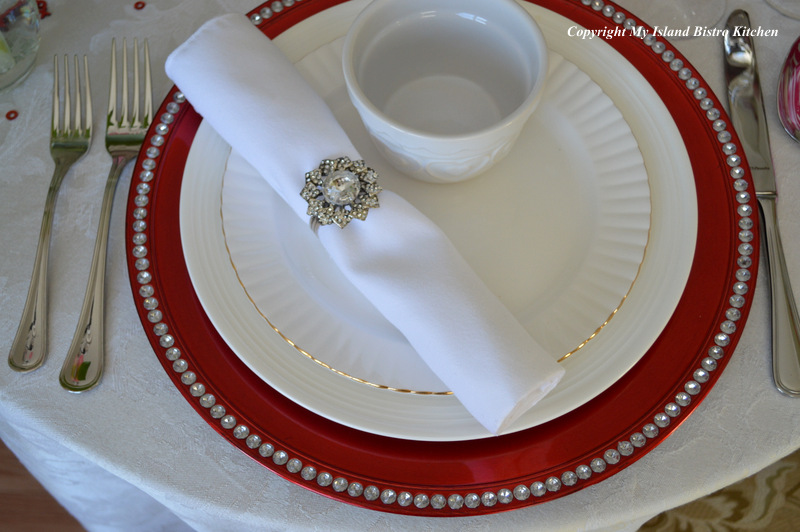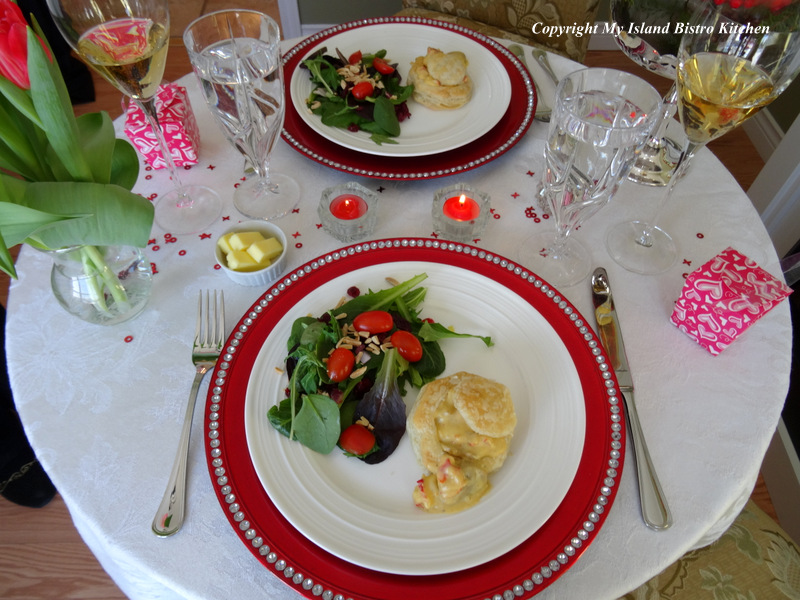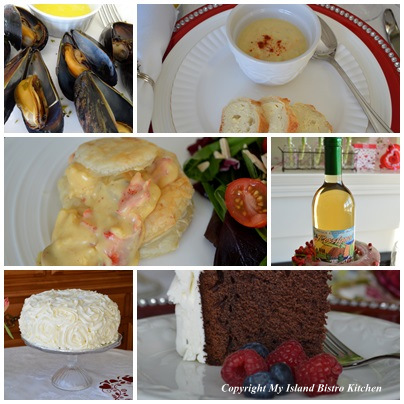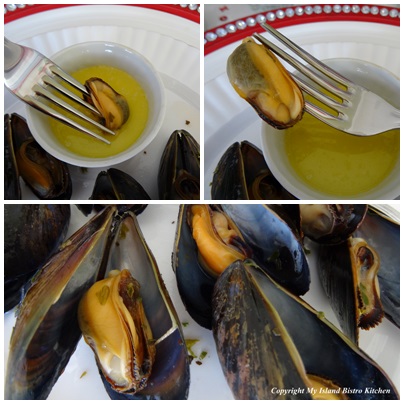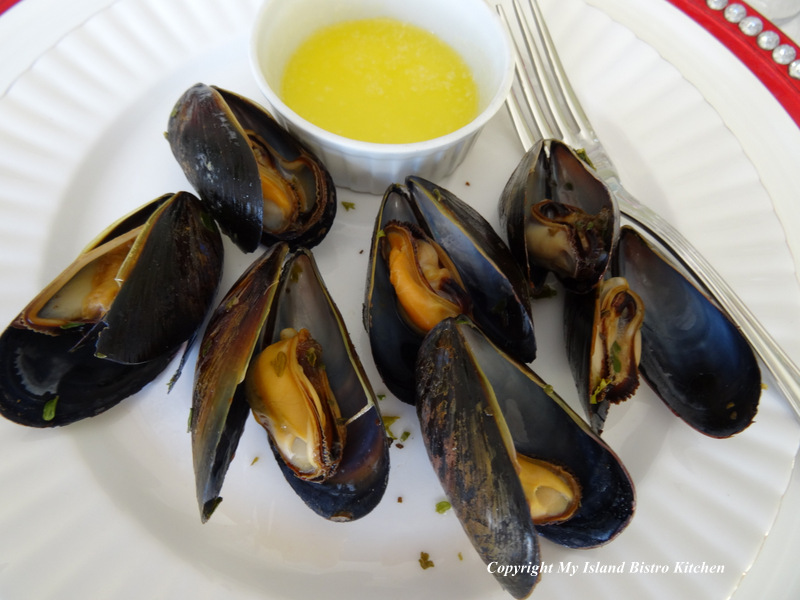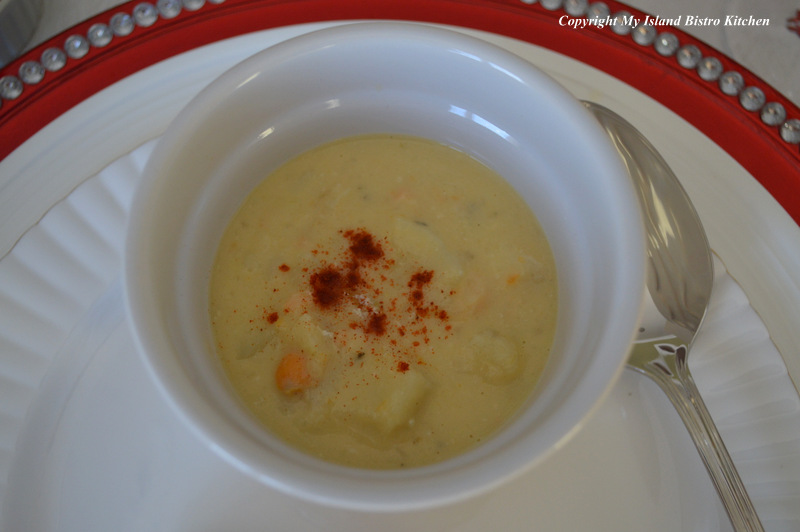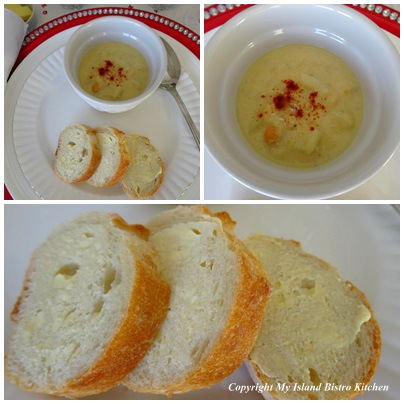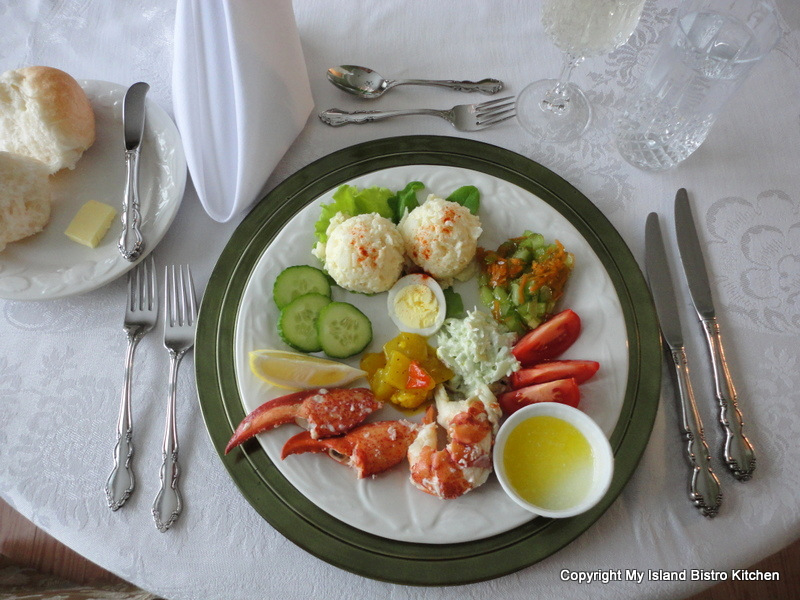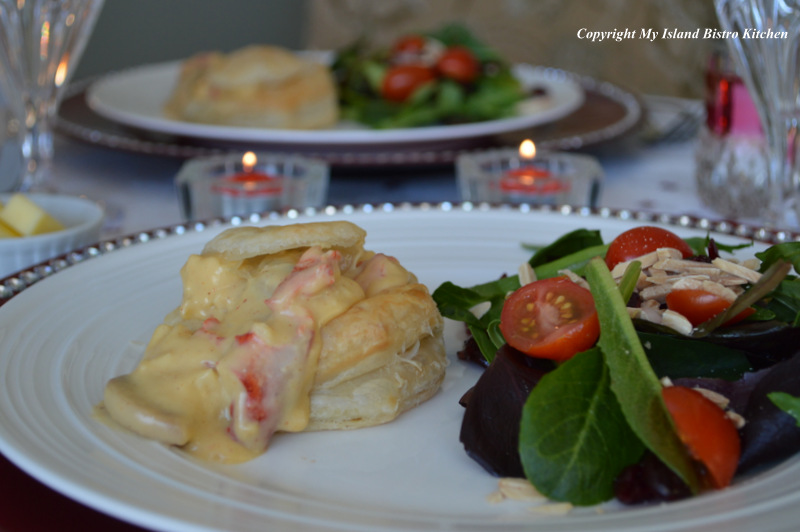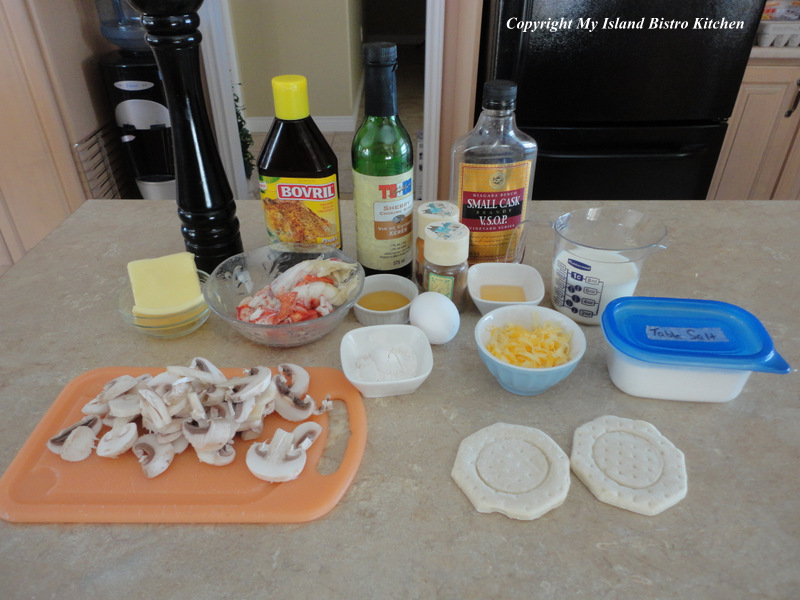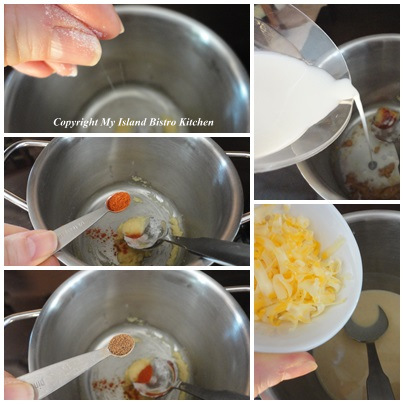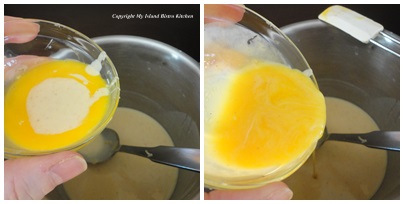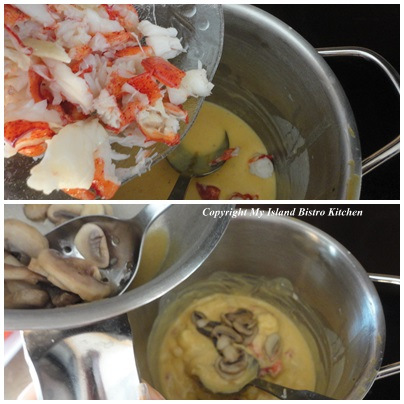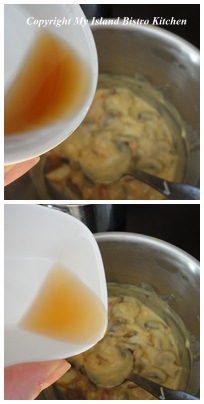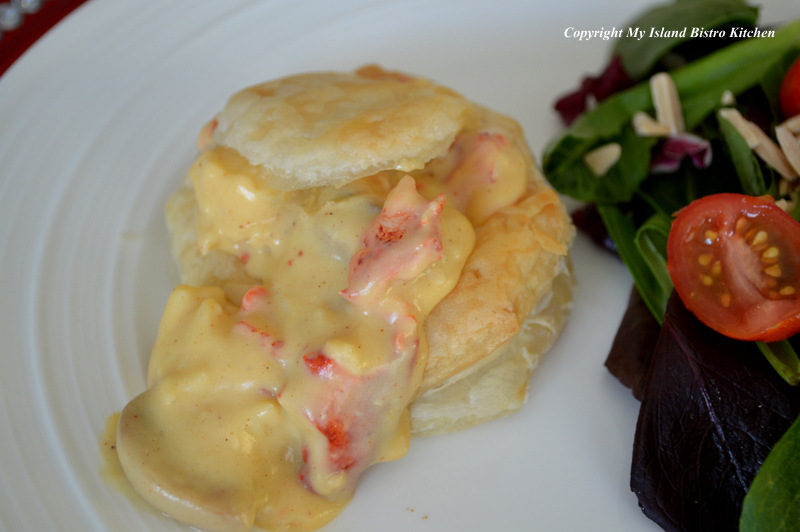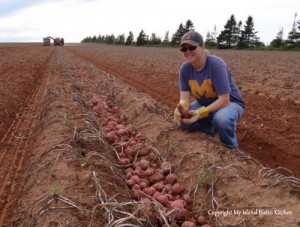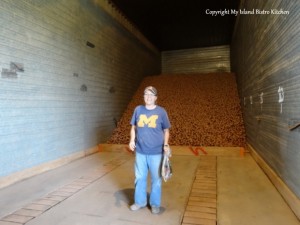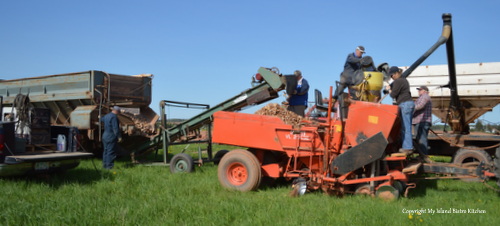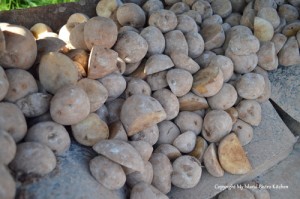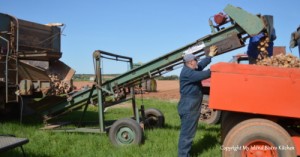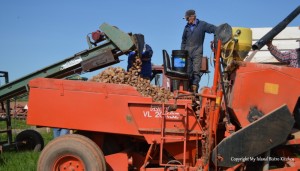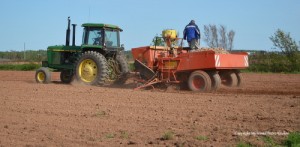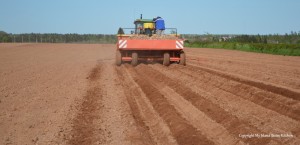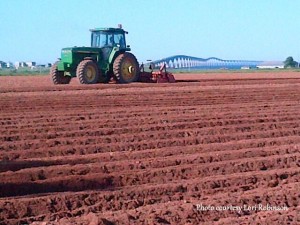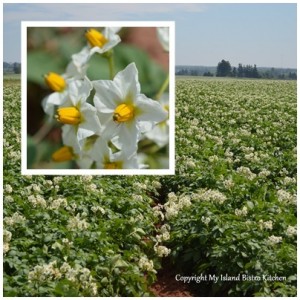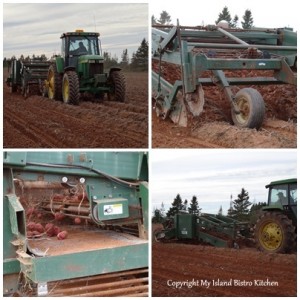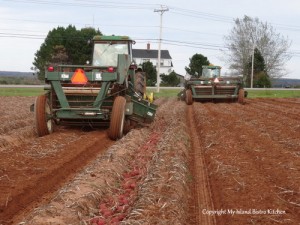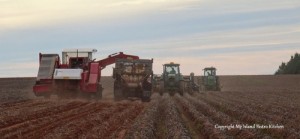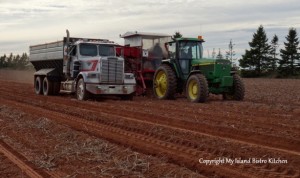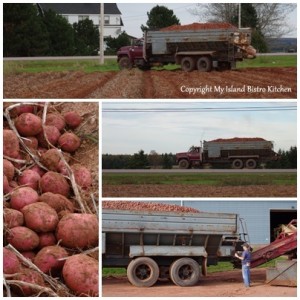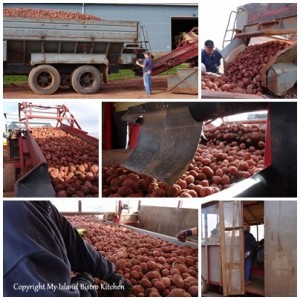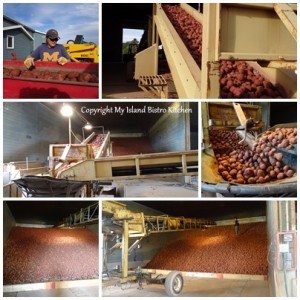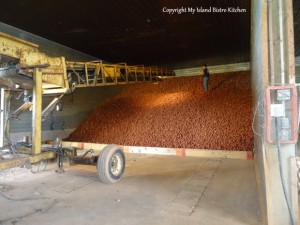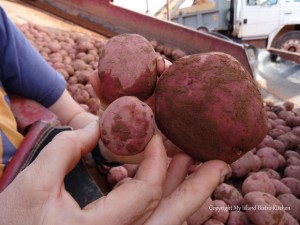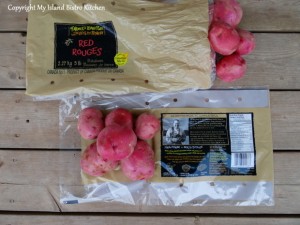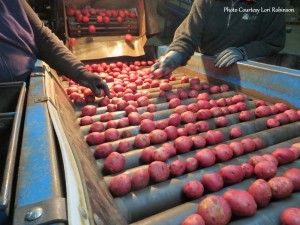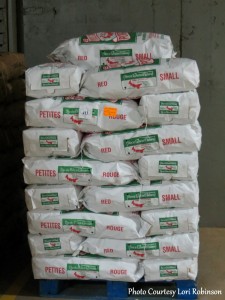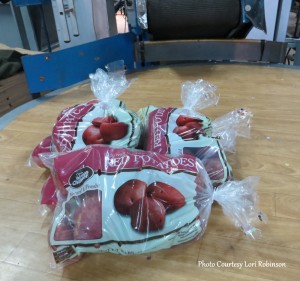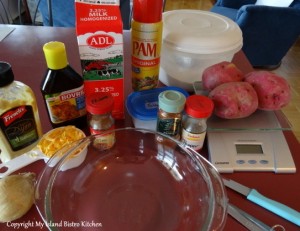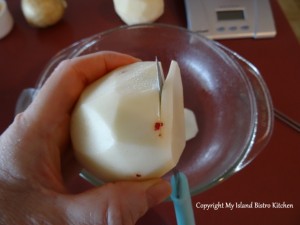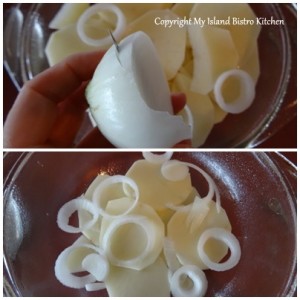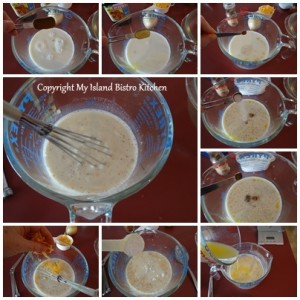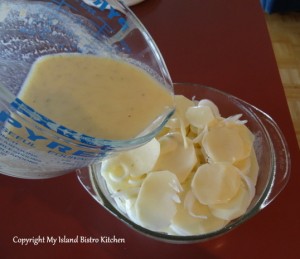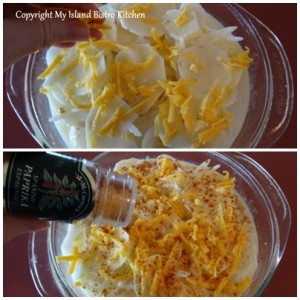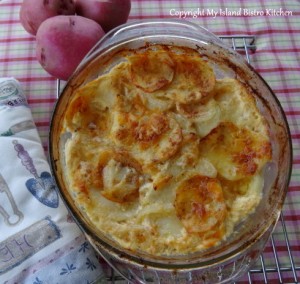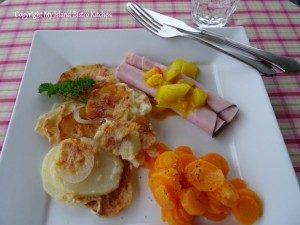Happy Valentine’s from Prince Edward Island!
As many of you know, I am part of the year-long Canadian Food Experience Project. Each month, food blogger participants are prompted by a prescribed theme upon which to base a posting on their individual blogs. The February theme is “My Canadian Love Affair”.
What follows is the menu and description of my Valentine’s dinner 2014, using several of my favorite Island food products. In order to meet the timelines of the Project, I have prepared my dinner a week early so it can be included in the Project’s monthly round-up. My Canadian Love Affair is all about the great local food produced on Prince Edward Island, Canada’s smallest province.
When I think of foods that I love, well….there are many! But, coming from an Island blessed with rich red fertile soil and surrounded by the sea, I would have to say that seafood and potatoes would rank high on my list. So, for my Valentine’s dinner, I have incorporated both but the potatoes in one of the recipes may be presented in a form that could surprise some of you. Here’s a taste to whet your appetite ….
The following is the four-course menu for my Valentine’s Dinner which features some of my favorite Island products:
Starter
Island Mussels
(steamed in apple cider and herbs and dipped in Island-churned butter)
Soup
Jeff McCourt’s PEI Seafood Chowder
(a rich, smooth, and creamy chowder filled
with a variety of PEI seafood and Island potatoes)
Main
Lobster Newburg served in a patty shell accompanied by a crisp green salad
(lobster and mushrooms in a rich sherry and cheese sauce)
Dessert
Chocolate Potato Cake
Wine Pairing: Rossignol’s Little Sands White Wine (PEI)
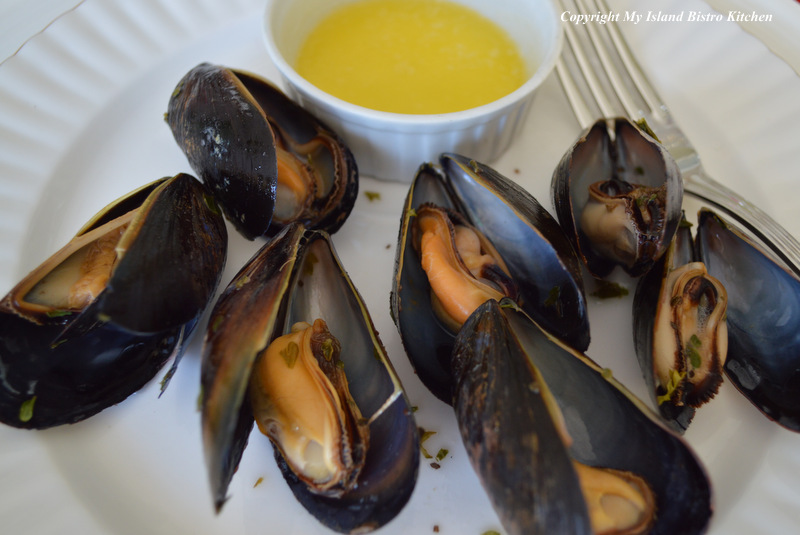
It would be hard to surpass PEI mussels. They are shipped all over the globe and are world renowned. There are many ways to prepare mussels and there are many different liquids in which they can be steamed, each of which will give a slightly different flavor to the mussels. The important thing about steaming mussels is to use very little liquid. Using too much liquid will diminish the flavor of the mussels. It is the steam from the liquid that forces the mussel shells open, not the amount of liquid itself. These delicacies take very little time to cook – they are cooked when the shells open, a process that generally takes about 5-7 minutes. Be sure to discard any shells that have not opened during the steaming process.
Today, I have steamed the mussels in a small amount of apple cider enhanced by a sprinkle each of lemon thyme, parsley, and basil all dried from our garden last summer. How much liquid is needed is based, of course, on how many mussels are being steamed. Because I was only steaming about 15-20 mussels for these two appetizers, I only used about 2 tbsp of apple cider.
While mussels are used in various recipes, including mussel chowder, the most common way to eat mussels on the Island is dipped in melted butter (oh-là-là!). Mussels are a common food found at many get-togethers because they are quick and easy to prepare and are so very tasty.
For the second course, I couldn’t bypass an all-time favorite of mine – a good seafood chowder.
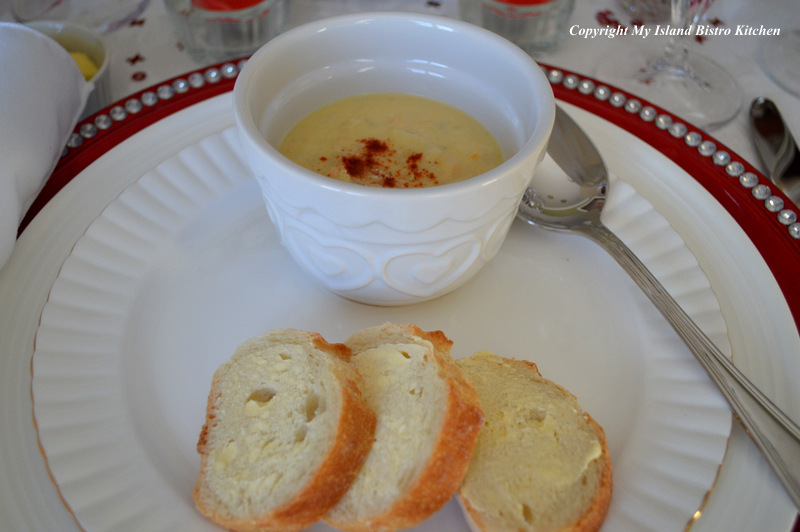
This recipe comes courtesy of the Culinary Boot Camps at the Culinary Institute of Canada in Charlottetown. This award-winning recipe was developed by Chef Jeff McCourt who was the chef instructor at the one-day “Island Flavors” Boot Camp that I attended a couple of years ago. This chowder was one of the dishes that participants made at the Boot Camp. The Culinary Institute kindly gave me permission to share the seafood chowder recipe as part of the story I was writing on the Boot Camps. If you find yourself on PEI during the summer/fall seasons when the Culinary Boot Camps are operating, this is a fantastic way to learn about cooking with local Island products and flavors. Click here to see my story on the Boot Camps and to get the PEI Seafood Chowder recipe.
I have made many seafood chowder recipes but have not found any that I liked better than this one. It is filled with a great variety of delectable Island seafood along with PEI potatoes and has a rich, tasty chowder base. Seafood chowder is a great way to sample several different kinds of local seafood all in one dish. This recipe suggests a variety of seafood that includes lobster, oysters, clams, mussels, scallops, and crab. On PEI, we would typically serve the seafood chowder with crusty rolls, biscuits, or baguette slices.
For my main course, I simply had to choose lobster! Lobster is still the seafood king on the Island and Islanders love their lobster.
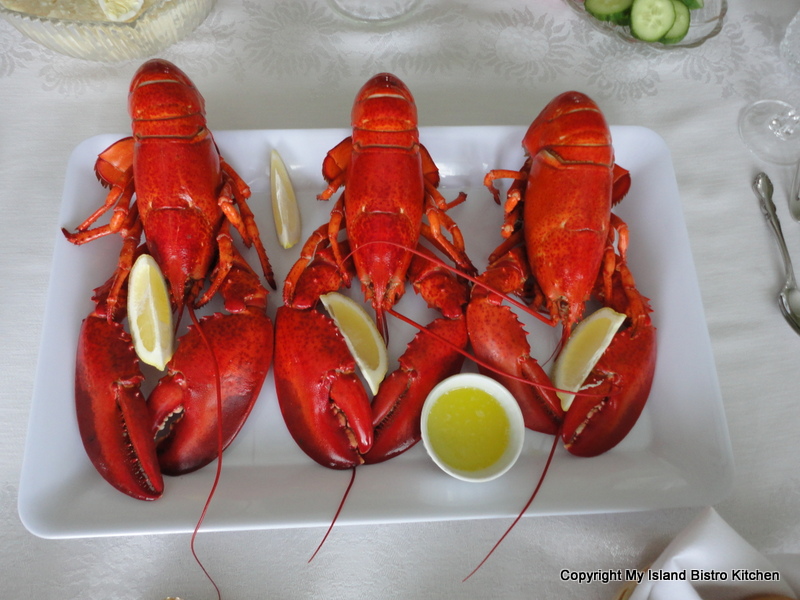
The most typical way Islanders enjoy their lobster is straight out of the shell, dipped in melted butter, and served with potato salad, coleslaw, and rolls. A jellied salad and slices of tomato and cucumber are also often included.
There are numerous enterprises around the Island that, seasonally, serve lobster suppers that generally consist of mussels, seafood chowder, lobster in the shell, salads, rolls, and a selection of pies and other desserts. There are three main lobster supper venues on PEI. Saint Anne’s Church Lobster Suppers in Hope River, not far from Cavendish, PEI, began in 1963 when a priest came up with the idea to have lobster suppers as a means to raise money to pay off the $35,000 mortgage on the church. New Glasgow Lobster Suppers in New Glasgow, in operation since 1958, and Fishermen’s Wharf Restaurant in North Rustico also serve full lobster suppers as well. A traditional lobster supper at one of these establishments is a must-stop for lobster lovers visiting PEI. In addition, most restaurants on the Island will feature lobster in one form or another on their menus. Last summer, I crisscrossed the Island in search of the best lobster roll on PEI since these are a common menu item for many restaurants. Click here to read about which one was my favorite.
The popularity of lobster is somewhat ironic. Today, it is a high-priced food, often considered by many a luxury and reserved for special occasions. However, on PEI, that was not always the case. I remember speaking with an Island woman who grew up about 65 years ago in an Island fishing community where her father was a lobster fisherman. She remembers being embarrassed opening her lunch at school and revealing a lobster sandwich since lobster was associated with poor people! My, how times have changed!
As a child, I had no interest in eating lobster. In fact, when my family was having a “feed of lobster” at home, my mother always roasted me a chicken! They would coax me to try the lobster but it just didn’t appeal to me. Finally, as a young adult, I gave in and tried a bite of lobster….well, let’s just say that’s when my love affair with lobster began and I’ve been making up for all the years I didn’t eat it!
So, it would be a logical choice that I would choose lobster as the main course for a special Valentine’s dinner. I have opted to go with a traditional Lobster Newburg served in light and airy patty shells accompanied by a crisp green salad.
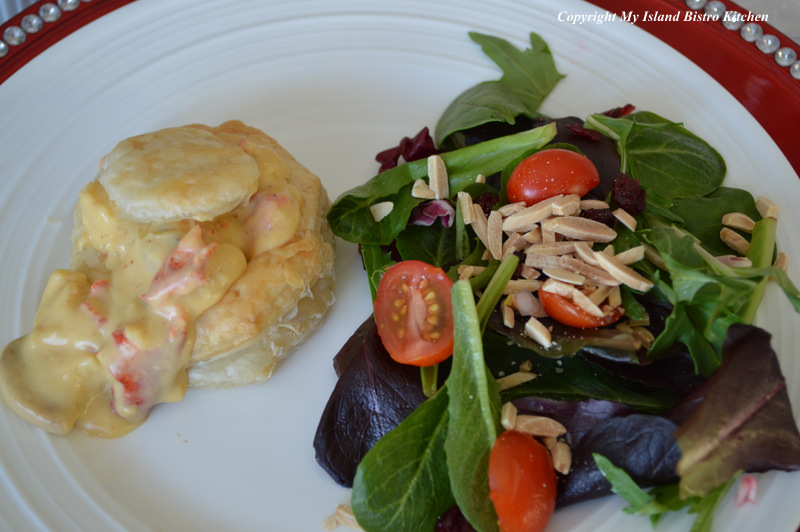
Lobster is fished in PEI from spring through to fall so we have no winter lobster fishing season on the Island. Many of us freeze lobster meat when it is in season to enjoy in recipes, like Lobster Newburg, throughout the remainder of the year. My recipe for Lobster Newburg can be made with either fresh or frozen lobster meat.
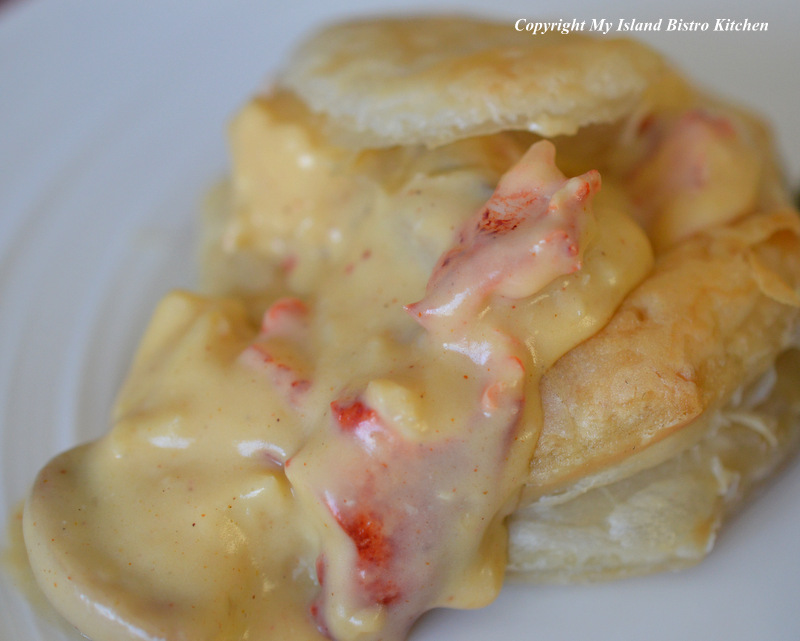
Lobster Newburg, although it is often considered an elaborate menu item, is really quite easy to prepare. It’s also a good way to stretch lobster to increase the number of servings you can get from the meat of a lobster. What makes Lobster Newburg so tasty and silky in texture is the sauce. This is a rich, creamy cheese and sherry sauce so large portion sizes are not necessary. I traditionally serve Lobster Newburg in patty shells. However, it can also be presented over toast points or served over a bed of steamed rice. Or, it may be served in small individual casserole dishes with a side of steamed asparagus spears. The recipe for my Lobster Newburg follows at the end of this posting.
Much as Islanders have an enduring love affair with food that comes from the sea that surrounds us, we also have a special fondness for our famous PEI potatoes. For the past two years, I have followed a couple of potato farmers from the planting of the crop to the harvesting process. To read these stories and get a couple of my favorite potato recipes, here are the two links to the postings for Smith Farms of Newton, PEI and Eric C. Robinson Inc., of Albany, PEI.
I have chosen to serve a Chocolate Potato Cake as a finale to my Valentine’s dinner. Yes, potatoes in a cake! It’s amazing how many different ways potatoes can be served. Earlier this week, I posted my recipe for Chocolate Potato Cake on my food blog.
To make this feast truly a PEI dinner, I chose a white wine from PEI’s Rossignol Winery in Little Sands, PEI. The Island has three wineries – the other two are Newman Estate Winery in Gladstone and Matos Winery in St. Catherine’s, PEI. Each makes fine wine that is a great accompaniment to any meal.
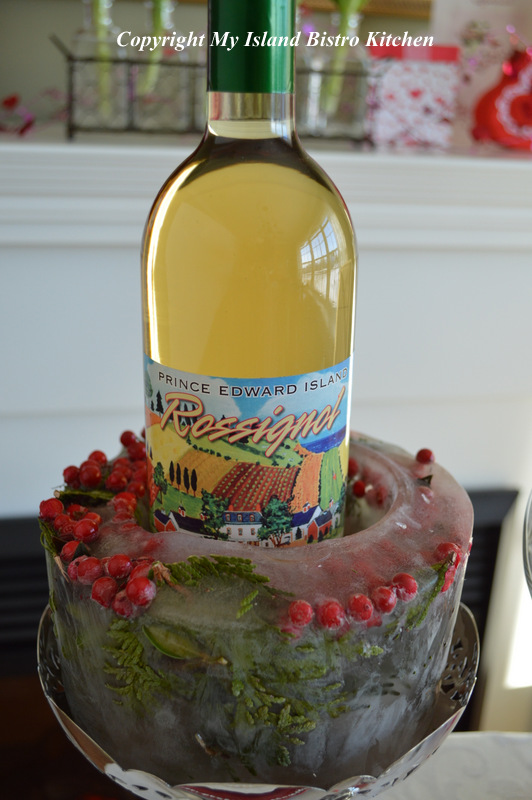
To compliment the tablesetting, I chose locally-grown tulips from Vanco Farms’ greenhouses in Mount Albion, PEI. Aren’t they beautiful flowers!

So, this is my local flavors Valentine’s dinner for 2014, featuring some of my favorite and most loved local PEI foods and wine. I hope you enjoy them, too!
Lobster Newburg
Ingredients:
4-5 oz cooked lobster (either fresh or frozen)
1 tbsp butter
3 oz mushrooms, sliced
1 tbsp butter
1½ tbsp flour
⅛ tsp paprika
pinch nutmeg
¾ cup whole milk or half-and-half
2 tbsp grated cheddar cheese
1 egg yolk, slightly beaten
½ tbsp sherry
1½ tsp brandy
1 tsp liquid chicken bouillon
salt and pepper, to taste
Method:
Assemble ingredients.
Melt first amount of butter in a medium-sized saucepan. Add and sauté mushrooms for approximately 2 minutes. Set aside.
In separate saucepan, melt remaining tablespoon of butter. Add flour, paprika, and nutmeg. Whisk in the milk until mixture is smooth. Add cheese. Stir mixture constantly until slightly thickened.
Add approximately 2 tbsp of the hot sauce to the egg yolk to temper the egg so it won’t curdle when added to the hot sauce. Add the tempered egg to the sauce in the pan.
Cook for 1-2 minutes, stirring constantly, then add the lobster meat and mushrooms.
Add the sherry and brandy and cook and stir slowly for 1-2 minutes to heat the lobster and mushrooms. Add salt and pepper to taste, if desired.
Serve immediately in baked patty shells or over toast points or steamed rice.
Yield: 2-3 servings
Thank you for visiting “the Bistro” today.
Be sure to visit my Facebook page at My Island Bistro Kitchen. You may also wish to follow me on twitter @PEIBistro, on Pinterest at “Island Bistro Kitchen”, and on Instagram at “PEIBistro”.


